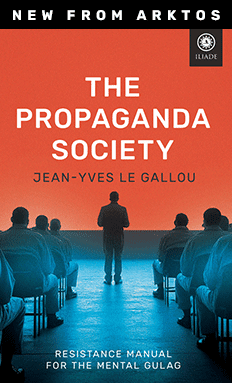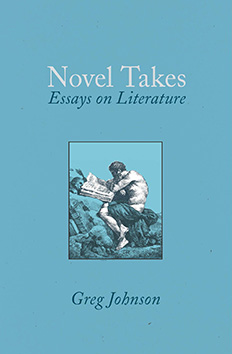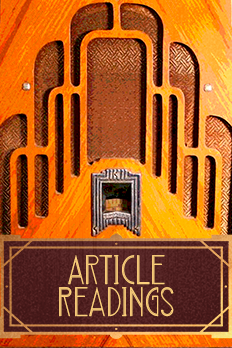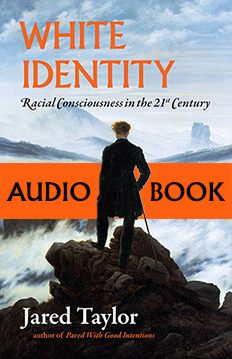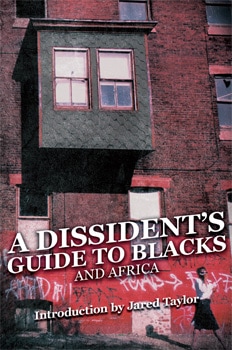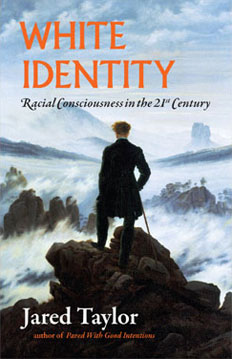How One Town Turned a Child’s ‘Cry for Help’ Into a Hate Crime
Frannie Block, Free Press, March 29, 2025
{snip}
Mike Klotz is not a superstitious man. But he acknowledges that the event that turned his life upside down happened on the unluckiest day of the year.
It was May 2022, a cool and overcast spring morning in Evanston, Illinois. Klotz can’t recall his 12-year-old son leaving the house—it was just a normal day—but he said the sixth grader would have walked, as usual, to Haven Middle School, accompanied by his 13-year-old brother.
According to staff members who were in the building that day, the atmosphere at Haven was tense—a group of students was staging a protest about the transfer of a few popular teachers.
But things were often tense at Haven, a school notorious for its violence, and where nearly 30 percent of students are considered low income. One teacher who worked there at the time—but has since left—told me that he “didn’t feel safe in the building.” He constantly feared “verbal and physical assault,” and “knew if something had happened to me, I wouldn’t be protected by the district.”
“We wouldn’t walk the hallways in between class periods because it was unsafe,” he told me. “That’s how bad it was.”
Klotz himself had spent two and a half years working as a special education teacher at Haven, but he said he resigned in early January 2022 because he no longer felt safe as a teacher there. But his own kids had to keep attending this school, he said, “because we really didn’t have much of a choice.” It’s not like they could have afforded private school, if they’d even wanted to send their kids somewhere else. “We are a household of public servants and moved to Evanston for the schools,” he told me.
Then came that Friday the 13th. By lunchtime, what had begun as a peaceful protest devolved into what one teacher described to me as “an absolute mob scene.” Inside the school, seventh and eighth graders were running through the hallways, slamming locker doors shut, and chanting “Fuck Latting,” referring to Haven’s principal, Christopher Latting. Someone called the police.
Klotz’s son wasn’t involved in any of this. He was outside, in the schoolyard, with the rest of the sixth grade.
But what happened in the schoolyard over the next several minutes would disrupt his family, subject them to a witch hunt, and ultimately force them to move out of town, Klotz told me.
Here’s how he tells the story:
First, a sixth grader—an 11-year-old friend of Klotz’s son—pulled three jump ropes out of a recess bin and started tying them in knots.
He started fashioning them into nooses. He made three. Another child saw that he seemed upset, so he ran up to Klotz’s son and asked him to come speak to his friend. Klotz’s son crossed the yard to ask the boy what he was doing—and checked if he was okay.
The two friends spoke a little. Then the child who made the nooses hung them on a small, shrub-like tree, and the two boys ran off to another part of the yard, leaving the ropes hanging a few feet off the ground. It wasn’t long until a parent caught sight of them—and immediately alerted the police.
Three hours later, at 5:08 p.m., every family with a child in Evanston/Skokie School District 65—which contains 18 schools—got an email from then-superintendent Devon Horton, a well-known pioneer of “antiracist” education. The subject line read: “Haven Student Sit-in & Hate Crime.”
In the email, Horton stated that parents had “reported finding three nooses hanging from trees” on the grounds of Haven, and wrote:
“This is a hate crime and a deliberate and specific incidence of an outwardly racist act. It resounds with a tone of hate and hurt that will impact members of our entire community, namely Black and African American students, staff, and families who have experienced generations of harm.”
Horton also wrote that “institutionalized racism has been used in the past to intimidate and discourage minority leaders.” Horton didn’t reference specific minority leaders, but both he and Principal Latting are black. Both men declined to respond to multiple requests for comment on this story. In an email to The Free Press, Latting wrote: “That time was profoundly traumatic for me, the students, staff, and the entire Haven community. As such, I am not in a place to revisit or discuss those experiences, even informally.”
{snip}
When Klotz read the email that Friday evening, his 12-year-old son was on his way to scout camp for the night. He had no idea his boy had witnessed the alleged hate crime, but he remembers thinking the email had jumped to conclusions in a way that seemed “reckless.” In Illinois, a hate crime is a felony, with a minimum of one year in prison.
{snip}
The next morning Mike Klotz got a call. It was the father of his son’s friend—the one who’d tied the nooses, and he said: My son was involved, and so was yours. (The Free Press is withholding the names of both boys to protect their privacy. The family of the other boy declined to participate in this story.)
After his son got home from camp that Sunday, Klotz asked him what had happened. The 12-year-old said he had asked if his friend was okay, and watched him hang the ropes in a tree. “I did not take his word for it,” Klotz told me. “I asked around. Two or three other people”—teachers, parents—“told me the exact same story.”
The Klotzes had been ready to accept that their son had done something wrong. But after learning the full story from others on Sunday, he felt the opposite. “I was damn proud of him,” Klotz told me. “He went and checked in on his friend. That’s all he’s guilty of. We should all be so lucky to have a friend like that.”
Even so, over the weekend, Klotz also started seeing other Haven parents on Facebook speculating about the “hate crime”—and the identities of the children who’d committed it. Although Klotz didn’t see his child’s name mentioned, he was worried enough to keep both of his sons home from school on Monday.
That evening, Haven parents got another email, this time from Principal Latting, who wrote that in response to “the hate crime,” the school would be bringing in “equity consultants” to “help the Haven community process and share their truth about the events that occurred on Friday,” and to enable “productive and necessary conversations around racial equity.”
One educator told me that the following week in class, teachers were instructed to give children time to discuss their feelings. During one session, the teacher said she asked her sixth-grade class if they knew what nooses symbolize. “Only two of the students had any knowledge of the fact that nooses had any kind of racialized meaning,” she said. “Every single other student thought that a noose symbolized and represented suicide.”
Klotz told me it’s not until eighth grade that Haven teaches kids about nooses being a symbol of America’s racist past. “And how do I know that, you’re wondering?” he asked me. “I taught the class.”
On Thursday night, Klotz received another email from the principal. This one was addressed only to him. Latting informed Klotz that his 12-year-old was being placed on “administrative absence”—effective immediately—because he had been “present during the incident which occurred last Friday, May 13.”
{snip}
Mike Klotz said his initial reaction to the email was “anger”—which came from “a place of helplessness, that we couldn’t seem to improve the situation at all.” He was speaking regularly to the family of the boy who’d tied the ropes, and learned that he had also been put on administrative absence from school. All the two families could do was wait for police to complete their investigation.
It took six weeks. In the meantime, both kids missed the rest of sixth grade.
During this time, the Klotz family said they were terrified that their son’s involvement in the case would become public knowledge. Melissa described how she felt at the time about the actions the school could take: “They’re going to send our name to the entire community and try to present that narrative that we are these awful racist people.”
At the time, she was a town planner with over a decade of experience working for the local authority in Evanston, but her career suddenly felt fragile. “Am I going to lose my job? Am I going to get attacked? Are my kids going to get attacked?” she wondered. “It made us feel so unsafe.”
This article is the first time the Klotzes have been publicly identified as the parents of one of the two children involved in the incident. Speaking exclusively to The Free Press, the couple said they thought long and hard about whether they wanted to waive their anonymity. They said they are doing so because they believe the school falsely presented their son as racist—and never corrected that narrative when evidence showed it wasn’t true. Even after police concluded that no hate crime occurred, they said the school never apologized.
While a misunderstanding over a noose at a middle school back in 2022 may seem like a small matter, the incident mushroomed into something much larger: a symbol of the ideologically fueled hysteria that swept America in the wake of Black Lives Matter protests, with adults publicly condemning two children, on social media and in school board meetings, of being “future Klan leaders” with “murderous values,” who were guilty of “an act of racial terrorizing.”
Mike Klotz told me the town’s reaction to the event was so extreme, “We had to fucking move because of it.”
The police completed their investigation on June 22, after the school year had finished, according to a police statement that same day. The “nooses,” police concluded in their report, weren’t a symbol of racial hatred, but were likely “a cry for help.”
The final, 33-page police report detailing the authorities’ investigation —which Klotz showed to The Free Press after it was made available via a Freedom of Information Act request—states that the boy responsible for putting the ropes in the trees “has some very serious mental health issues and has tied knots previously as a soothing technique.”
According to the report, police spoke to a Haven student who said she watched a boy “place the rope over a tree, and put the noose around his neck for approximately 1 to 2 minutes.” She said the boy had a “look on his face” that was “serious,” and he “appeared as though he did not want to be there.” She told police other students there were worried he might “harm himself,” but added: “The tree the rope was placed over was not big enough to hold his weight.”
Two days after the incident, the father of the 11-year-old accused hate criminal told a Haven staffer that “his son was in the midst of a mental health crisis when this incident occurred,” according to the report.
{snip}
Even after police concluded no hate crime had been committed, the office of Cook County prosecutor Kim Foxx went on to punish the troubled sixth grader who tied the knots in the schoolyard, charging him with disorderly conduct. In Illinois, Glew said, “disorderly conduct” is defined as “acting in a way that disturbs others.” In the case of the incident at Haven, he explained, “individuals that had witnessed this, or were aware of it, felt alarmed and threatened.”
Glew told me the child who tied the nooses was referred to juvenile court, which ultimately concluded the incident would not be “treated as a criminal matter.”
Meanwhile, the Klotzes realized that in Evanston, the narrative was set in stone. Mike Klotz said an apology is “the only thing I really even want.” But one teacher, who has worked in the district for 15 years, told me that in order for that to happen, “Somebody would have to acknowledge they were wrong.”
{snip}
According to Klotz, after Superintendent Horton sent out the first email about the hate crime, parents immediately forgot that the school had been the scene of a riot earlier that day, as students protested the transfer of teachers, leading to chaos in the halls and students leaving the building without permission. “We got a bunch of violence going on at this school, and now all of a sudden this happened, and nobody talked anything about any of those things ever again,” he said. “It was hate crime, hate crime, hate crime, hate crime.”
{snip}





